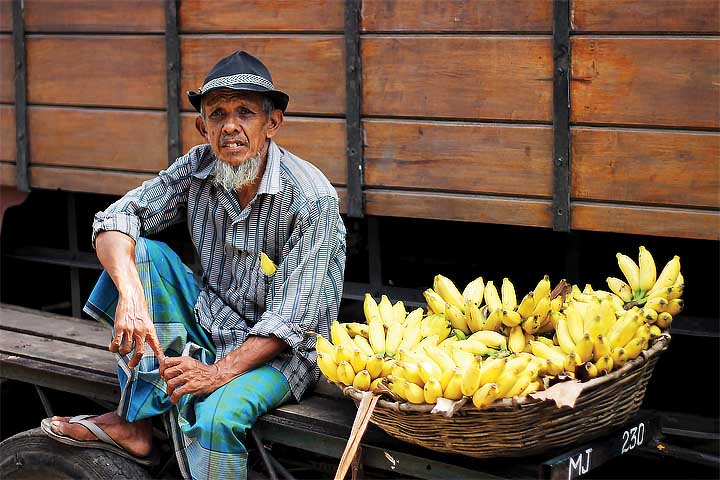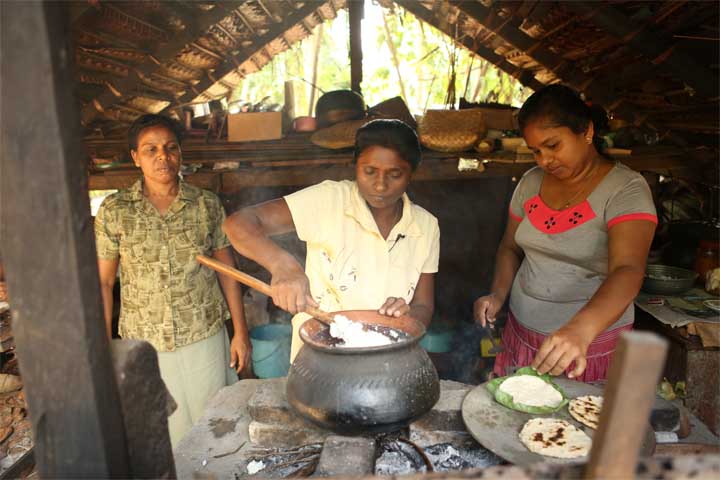Win a Sri Lankan food adventure!
Cook, Snap & Share your most memorable travel recipe to win.
Sri Lanka Regional Guide
The spice island of Sri Lanka (or Ceylon as it was known) draws its recipes from a global cookbook. A few hundred years ago, nations sailed halfway around the world to trade its cinnamon, pepper, cloves, nutmeg, mace and vanilla, and each one left their culinary mark. Dutch, English, Portuguese, Arabs, Malays Moors and Indians - you'll see hints of them all in modern Sri Lankan cuisine.
Like a lot of the subcontinent, curries and steamed white rice are the base note for most dishes, but it'ss the harmonies that really separate Sri Lankan food: the tart pickles, chutneys and sambals, the tropical twang of fresh lime juice, a silky dash of coconut cream. Although it shares a few culinary roots with India's Kerala region, its curries are built on different foundations to most of the mainland. Each plate is a little taste of the country's past, and a glimpse into its very bright future.
The North
The Indian influence is stronger in the north, the curries hotter, the seafood more plentiful. The majority of Sri Lanka's Tamils live here and have developed a very distinctive regional cuisine. Tangy mango chutneys and tomato add a depth of flavour to fiery spices. Look out for popular snacks like string Hoppers (vermicelli-like noodles made from rice flour) and tomato sothi (soup), puttu (steamed rice powder cooked in bamboo) and appam (a thin, crusty pancake made with rice flour).
In Jaffna, the north's major port town, you'll find some of the island's best seafood – crabs, shark, fish, prawns and squid. Vegetarian curries are popular here too. Most of these feature garden-grown produce like pumpkin, yam, jackfruit seeds and hibiscus flowers. Jaffna has recently eased restrictions on foreign tourism, so travellers can finally get a proper taste of fiery Tamil cuisine (just keep a glass of milk handy).
Hill Country
Nothing shows off Sri Lanka's diversity like the short journey from the sweaty chaos of Colombo to the cool air and greenery of island's interior. Here, among forested mountains and rolling hills covered in tea plantations, you'll find the picture-postcard town of Kandy, a very decent cuppa, and a whole range of regional dishes to try.
The fertile hills around Ella are the perfect conditions not only for tea, but for cardamom, curry leaves and turmeric. The curries here are milder, more delicate, perfumed with an array of herbs and spices. Chilli doesn't feature as much as it does in the north. Locals are more proud of their subtle heroes, like tender jackfruit curry, or cinnamon-spiced potatoes. Dal, sambal, poppadoms and spiced rice often accompany dishes for a little added zing and crunch. And while you're here you may as well wash down your meals with some of the finest tea in the world. Not a bad way to spend an evening, all things considered.

The South
Southern Sri Lanka is fishing country. The coast here has several types of Balaya and Kelawalla (popular local fish species) you won't find anywhere else on the island. It's the land of sun, sand and surf, and you can detect a more prominent citrus note (usually fresh lime) in many of the local dishes. There's a lot of variety here too. Curries are as likely to feature the cinnamon once prized by Portuguese merchants as the chillies those merchants would leave behind. Since rain can be scarce in the lowlands, fish is often dried in salt (karawala) or pickled in lime (jaadi) as a preservative.
While you're in the south, make sure you try a few of the local desserts. Sweetened buffalo curd is a popular after dinner favourite, or there's kirala fruit milk, made from local kirala fruit and treacle. The good news for travellers with sensitive tongues is that southern cuisine comes in all shapes, sizes and temperatures: curries can range from the scaldingly hot to the delicate and mild. The best way to find your favourite? Try them all.
All images courtesy of Intrepid Travel and Perennial Plate.